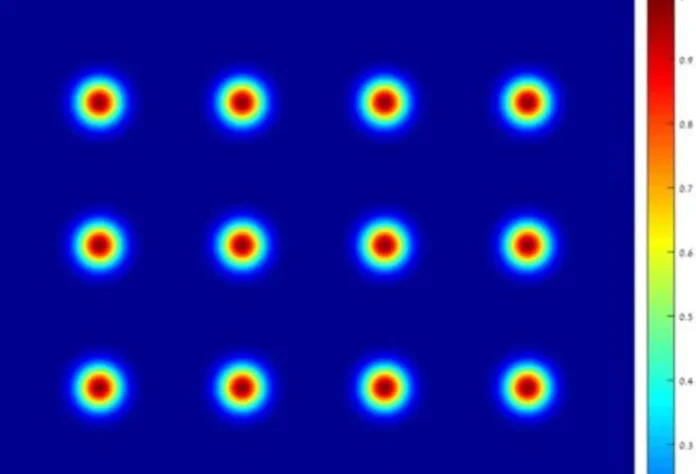Optical beam splitters are crucial components of various optical systems that aim to produce two or more output laser beams by splitting an incoming laser beam. To get output beams with specific parameters, such as a specific number of spots, polarization, separation angle between two output beams, and the power ratio of the output beams, one can employ different types of diffractive beam splitters for different conditions.
Different Types of Beam Splitters
- The cube beam splitter is one of the most commonly used designs for optical beam splitter that involves the setup of a cube structure by attaching two prisms together. When an input beam falls on the cube beam splitters, it generates two output beams that travel perpendicular to each other with no change in the path of the beams. These beam splitters can have non-polarizing and polarizing designs and the ratio of reflection and transmission remains 50-50 here.
- The plate beam splitter is another popular type of beam splitter that generates two output beams by splitting an incoming laser beam. The setup for this beam splitter involves a flat optical window with fractional reflective coating on one side and anti-reflective coating on the other. The coating used can control the ratio between reflection and transmission while the reflected and transmitted beams create a 90-degree angle between them. However, the transmitted beam path is slightly shifted compared to the input beam.
- Now, we are going to talk about a different type of beam splitter that has various industrial and medical applications- Microlens arrays. This beam splitter setup consists of lenslets or a sequence of many small lenses with ideantical radius of curvature and size. This beam-splitting setup is useful for producing plenty of small, focused output beams from an input beam.
- Diffractive beam spitter is the fourth and one of the most versatile beam-splitters. These beam splitters are also called “dot generators” or “multi-spots” as they can create multiple output beams. Therefore, whereas the cube and plate beam splitters can only produce two output beams from a single beam, these beam splitters can produce several output beams with any pre-designed arrangement.
Applications of Optical Beam Splitters
Diffractive beam splitters have plenty of applications as they can increase the throughput of an optical system by a factor proportional to the diffractive order numbers. Diffractive beam splitters are actually grating-like, periodic, diffractive optical elements. These optical elements work on the basis of the diffractive principle. Some notable applications of diffractive beam splitters that aim to produce a 2-D matrix of spots are laser surface structuring, laser perforation, and aesthetic fractional skin treatments. The 2-D multispot configuration also has another interesting application in laser projection using structured light, for Flash LiDAR or 3D sensing.
There are several other notable applications of optical beam splitters involving one-dimensional spot arrays, such as laser dicing, laser scribing, laser welding, and laser cutting. Diffractive beam samplers are useful for laser beam’s live sampling that involves 1-dimensional multispot formation.



































